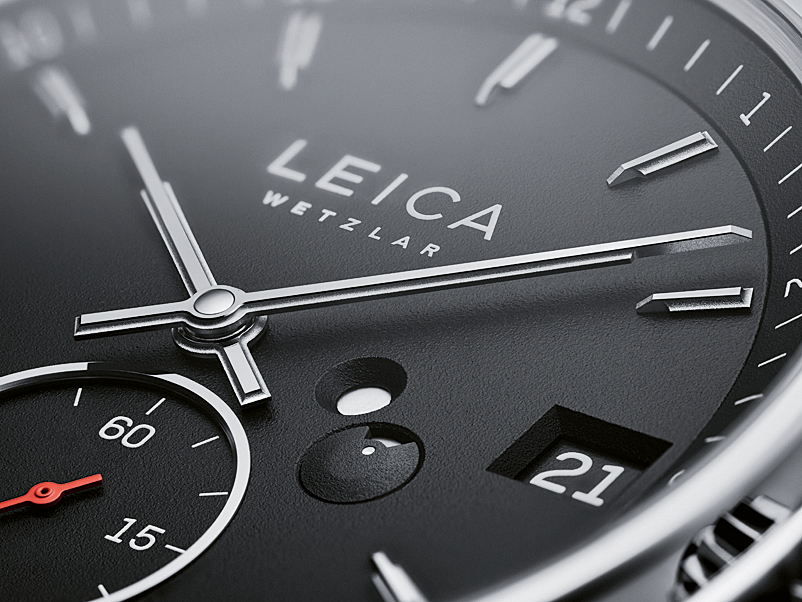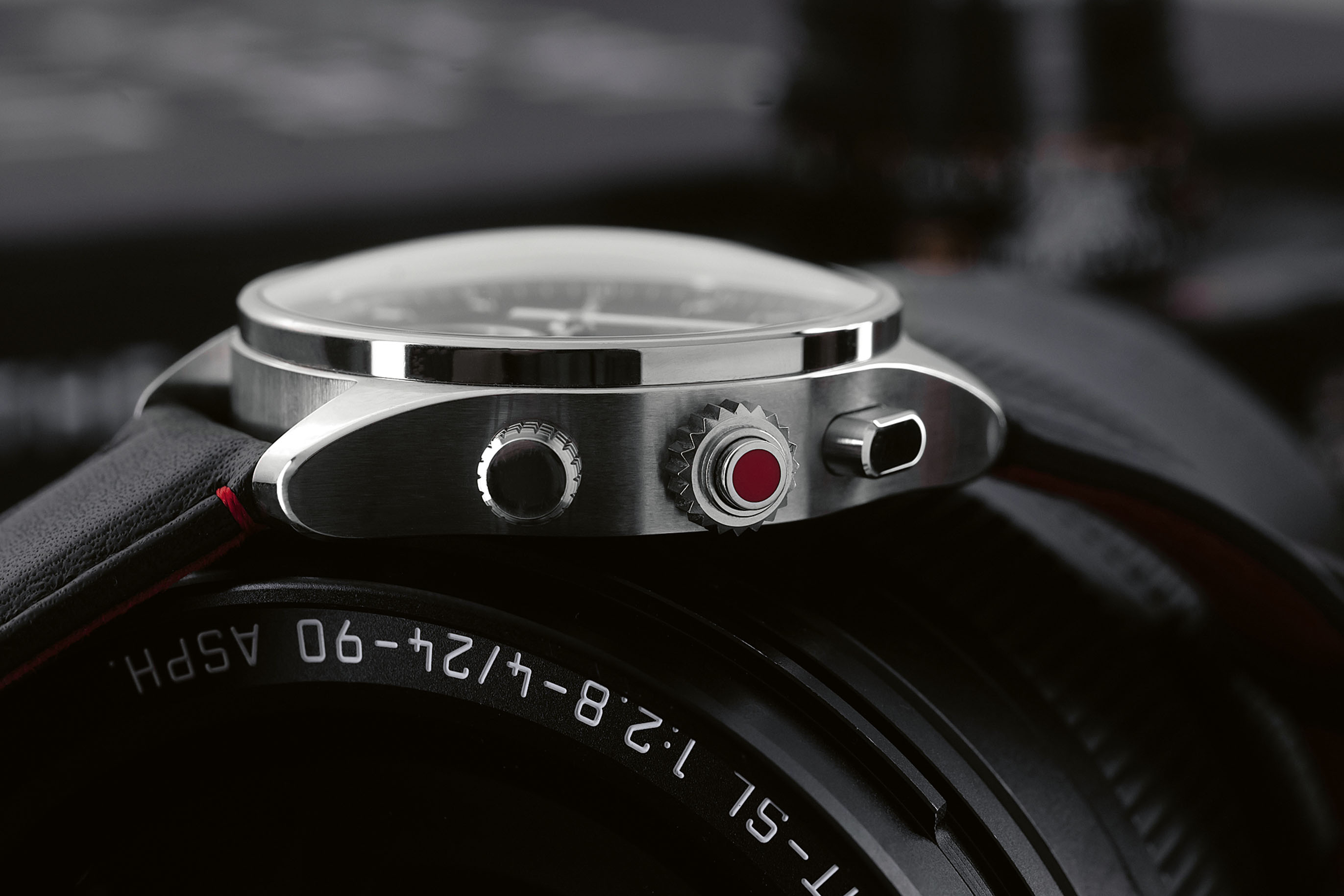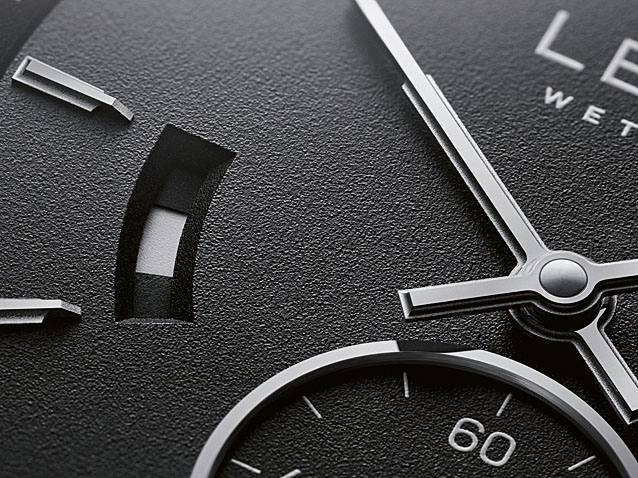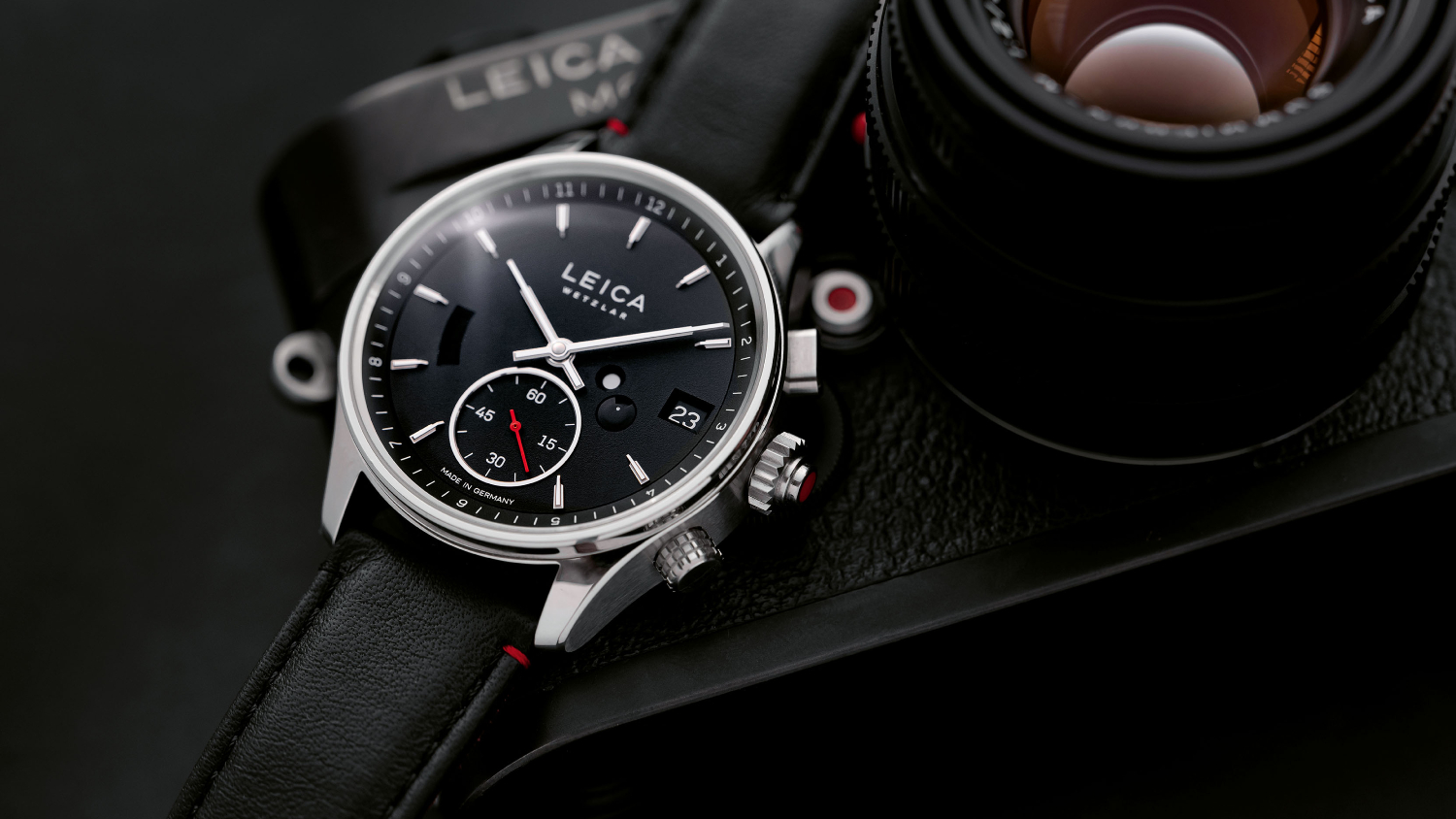Photography today includes many functions that are taken for granted: Autofocus, image stabilizers, video capability, plus the ability to post everything online immediately. The Leica M camera offers neither autofocus, an electronic viewfinder, nor an image stabilizer. Fans of the Leica M say that they are “closer to the subject” and that this makes for a purer experience. Similarly, the ZM 2 watch (‘ZM’ stands for Zeitmesser, which means timepiece in German) must be wound by hand and its second timezone must be set manually. The mechanical ZM 2, our test watch, offers the same kind of experience with its hand-wound power supply, clearly designed pushers, and a view through the transparent caseback window that shows this analog technology up close.
 Leica ZM 2
Leica ZM 2“Leica is especially well known for its connection to mechanics,” says Andreas Kaufmann, Chairman of the Supervisory Board of Leica Camera AG. “The licensing agreement from 1996 that awarded Leica the brand rights clearly defined what we could produce for a period of 99 years. And watches are second on that list.” This connection is as sharp as an autofocus can be, just like so many other features that only a Leica watch can offer.
The Pusher Crown Works Like a Camera’s Shutter-release Button
In addition to the central time display with hours and minutes, a small seconds subdial at 6 o’clock, and the date at 3 o’clock, the ZM 2 has a power-reserve display between 8 and 9 o’clock. It also has a second timezone indication shown on an inner rotating ring around the dial that is linked to a day/night indicator at 4 o’clock. But these commonly seen functions aren’t what makes the ZM 2 extraordinary—it’s the unique layout and look.
 The watch was designed by Professor Achim Heine
The watch was designed by Professor Achim HeineThe watch was designed by Professor Achim Heine, a product designer at Leica until 2008 and the reason for the unmistakable camera-like details on the ZM 2, like the shape of the carefully crafted, 41mm stainless-steel case (with pressure resistance to 5 bar) and a silhouette inspired by the lens cover of a camera. The domed crystal with double-sided anti-glare treatment mirrors the look of a camera lens.
The bead-blasted and diamond-polished hands and hour markers are part of a detailed geometry, where reflections of light link the subject of time with photography and the essential role of exposure time. The matte-black dial is milled from a solid block of aluminum. Stark colour contrasts ensure that the play of light does not detract from the legibility.
To engage the time-setting mode, rather than pulling out the patented crown as is normally the case, you press it briefly, just like pressing the button on a camera shutter. This stops the movement. At the same time, the small seconds jumps to its zero position for simple and precise time setting. Pressing the crown again switches the watch back to running mode.
The dedicated oval-shaped pusher at 2 o’clock is used for the quick adjustment of the relatively large and easy-to-read date. The rotating ring bezel for the second time zone can be turned in either direction using the additional crown located at 4 o’clock. Its pronounced grooves have a pattern like the one found on the operating features of a camera. Corresponding to this feature is a round day/night indicator at 4 o’clock. The dial opening above it is used to check the functional mode linked to the crown. White means the watch is running and also allows for manual winding of the ZM 2. Red shows the hand-setting function is engaged for setting the watch to the exact second.
The arc-shaped opening in the dial between 8 and 9 o’clock serves as the power-reserve display and recalls the aperture of a camera. White means that the aperture is open, and the watch is fully wound. Black indicates that the aperture is closed, and the watch’s power is depleted. The most striking design element by far is the pusher crown, whose function and design are inspired by the shutter release button on a traditional Leica camera and bears the same red dot.
As this timepiece was created, Leica emphasised the importance of ‘Made in Germany’ and entered into a partnership with Lehmann Präzision GmbH. This company, based in Germany’s Black Forest region, was responsible for the watch’s technical development and construction. The well-known watch designer Andreas Strehler contributed by producing the majority of the movement components, as well as the case, dial and hands. The only outsourced components were the wheels, jewels, crystals and watch straps. This newly developed hand-wound movement, designed from the ground up, bears the same name as the watch itself: ZM 2. It consists of 240 handmade parts and ticks at a rate of 4Hz with a power reserve of 60 hours. It also provides a true ‘reserve’ even when the aperture is closed and appears black. A differential gear controls two racks that move apart synchronously to open the aperture. As the watch winds down, the racks return to their original positions and the aperture closes.
The Power-reserve Display Recalls an Aperture Setting
The architecture and the power-reserve indicator, as well as the manufacture of various components of the ZM 2 calibre, are challenging from a craftsmanship point of view simply because they are new. One example is the complex column wheel. Similar to a column wheel in a chronograph, this one is linked to the patented pusher crown. When the pusher crown is pressed, an activating lever moves the column wheel into the next position. This allows it to control four functions. First, the mode display whereby a rack-and-pinion pushes a red-and-white disc forward and back. Second, the hack mechanism: It is released to stop the balance wheel. Third, the reset of the small seconds: A reset lever brings the seconds lever with a cam and the second hand into the correct position. And fourth, a rocking pinion engages the hand-setting mode. Pressing the crown again disengages the hand-setting mechanism and the watch begins to run with precise, to-the-second accuracy. The complexity of the crown function requires a separate, dedicated pusher for setting the date quickly and easily.
 The aperture-like power-reserve indicator
The aperture-like power-reserve indicatorA series of samples were designed for developing the sophisticated structures that uniquely integrate the functions into the ZM 2. This was followed by building prototypes and testing models, ultimately resulting in the creation of an independent movement design. A look through the sapphire crystal caseback reveals not only the unusual shapes of the bridges but also their elaborate sandblasted surfaces and line-finished edges. You can follow the oscillations of the balance wheel, the movement of the spring that stops it, the lever and cam that reset the small seconds, and finally the all-important column wheel and manual winding mechanism, including the rotation of the differential gear for the power-reserve indication. So if you’re looking for an unusual subject to focus on, the ZM 2 is just the right choice.
 The unique architecture of the ZM 2 calibre
The unique architecture of the ZM 2 calibreImages: Courtesy Brand
This story first appeared in the April-June 2023 print issue of WatchTime India.








